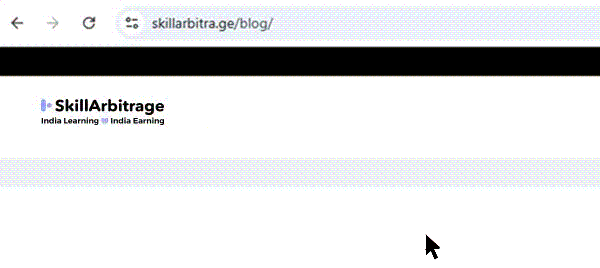This article is for freelancers and consultants who want to close high-ticket, high-momentum buyers. These are clients who already know the problem, want a solution now, and don’t need convincing. You’ll learn a clean 4-question script to spot these whales and close fast without pitching, nurturing, or handholding.
Table of Contents
Don’t sell to convince, sell to confirm
You know the type.
They don’t ask, “Why should I work with you?”
They ask, “Do you have a slot open next week?”
You’re gearing up for a long pitch. They just want a yes or no.
This isn’t rare. High-ticket, high-momentum clients show up like this all the time. They’ve already googled the problem. They’ve followed your work. Maybe they’ve even tried to DIY a solution and hit a wall. They’re not on the call to explore. They’re here to end the search.
The mistake most freelancers and consultants make?
They talk too much.
They treat every lead like a blank slate. Like someone who needs education, trust-building, and objections handled. So they launch into a presentation. Stack proof. Show slides. Over-answer questions that haven’t even been asked yet.
Meanwhile, the buyer is sitting there thinking, “I was already sold. Why are you still pitching?”
This script isn’t for browsers. It’s not for warm leads who might convert in three months. It’s for buyers in motion. The ones already diving. They don’t need a hand. They need a signal.
If you sell to these people the usual way, you’ll lose them. They’ll feel dragged backwards. Or worse, they’ll assume you don’t recognize their urgency.
The best clients don’t want to be persuaded. They want clarity.
That’s the point of this article:
To show you how to stop pitching like every client is cold…
And start closing the ones who are already hot.
You’ll learn a 4-question framework that works especially well for:
- Consultants who offer deep, strategic work
- Coaches who don’t want to fill 50 seats, just 5
- Experts who thrive with a handful of high-commitment clients instead of chasing traffic and likes
No pitching. No slides. No scripts to memorize.
Just 4 questions to qualify, clarify, and confirm.
Let’s get to it.
What is the 4-question close?
Picture this.
You get a DM that says:
“Hey, been following your stuff for a while. Quick question, do you work with consultants?”
No small talk. No fluff. You can feel it.
This is not a browser. This is someone with a budget, urgency, and a half-written Stripe password.
Now what?
Most people fumble here. They either panic and overshare. Or they ghost the DM, trying to “plan the perfect reply.”
The 4-Question Close is your fix.
It’s not a pitch. It’s not a funnel. It’s a minimalist decision script for buyers already in motion.
Forget the brochure. They want clarity, a simple yes or no, fit or no fit.
Here’s the shape of it:
- It works in short, unscripted conversations. DMs. 15-minute calls.
- It respects the buyer’s speed. You’re not warming them up, you’re getting out of their way.
- It qualifies without convincing. These questions are not about swaying. They’re about surfacing what’s already true.
You’re not trying to change their mind. You’re trying to confirm what they already suspect:
You’re the person who can help them finish what they’ve already started.
But let’s be clear, this won’t work on cold leads.
This isn’t for the client who says, “Tell me more,” and then disappears for three weeks.
It’s not for skeptics who need a full-blown strategy call before saying yes.
It’s not for browsers comparing five freelancers on Upwork.
The 4-Question Close is for high-momentum buyers:
- People who already know the problem
- People who already tried something and want a sharper solution
- People who are actively seeking someone and just need to know if it’s you
If you try this on cold leads, it’ll feel rushed.
If you use it on ready buyers, it’ll feel like relief.
This script helps you meet them at the speed they’re moving.
No pitch deck. No monologue. No overkill.
Just four clean questions to close the deal before they even think of clicking away.
The 4 questions that make high-net-worth clients convince themselves
Let’s break it down.
Q1: What’s the big result you’re already chasing?
You’re not asking what they want. You’re asking what they’re already doing.
Are they writing a book, hiring a team, scaling a course, or switching business models?
Whatever it is, this question gets them to say it out loud.
It filters out the dabblers.
You’re looking for someone who’s mid-mission, not daydreaming.
It also shows you their internal headline. If they don’t have one, they’re not ready to hire.
If they do, this question gives you a target to work with, fast.
Q2: What have you already tried?
This kills two birds.
First, it shows you how deep they’ve gone. Have they tried coaching, courses, software, failed hires?
Second, it protects you from becoming their test subject.
You’re not here to explain what a funnel is or why they need a landing page, software, or coaching.
You want to hear sentences like “We’ve run paid ads in-house for 6 months but can’t crack CAC.”
Or “I’ve closed sales calls solo but want to automate qualification.”
That’s your buyer.
If their answer is “Well, I’m just exploring…,” walk away. They’re not ready.
Q3: What’s the biggest bottleneck right now?
This is the goldmine.
Most high-momentum buyers already know the answer to this.
They’ve felt it in their gut for weeks. It’s why they messaged you.
Your job is to make it explicit. Help them say:
“We can’t scale because every new client still needs me on calls.”
Or “I don’t know how to price without scaring them off.”
Once they say it out loud, the deal is halfway done.
You didn’t convince them of the problem. You helped them see it clearly.
Q4: Want help fixing that?
That’s it.
No hype. No pitch deck. No “let’s hop on a call” unless they ask.
This is a respectful, clean yes/no moment.
If they’re truly in motion, they’ll say:
“Yeah, actually, what would that look like?”
Or even better: “Yes. Send me your link.”
If not, you’ve lost nothing. You’ve filtered without wasting energy.
The power here isn’t in the persuasion.
It’s in creating the conditions for their clarity.
Why this script works on high-agency buyers
Let’s be honest, anyone who needs convincing is a liability.
They ask for decks. They stall on decisions. They say, “Let me think about it” and vanish.
You didn’t lose the sale. You lost days of focus.
But high-agency buyers?
Different breed.
These are people who’ve already tried three things, ruled out five, and still have momentum.
They’re not looking for a savior. They’re looking for a second brain.
And when you show up with these four questions, calm, sharp, and unfazed, it signals:
“I’m not here to sell. I’m here to assess.”
That flips the dynamic.
Suddenly, you’re not pitching. You’re diagnosing.
You’re not performing. You’re collaborating.
They feel it.
Because high-agency buyers don’t want a pitch, they want precision.
They want someone who gets to the heart of it without fluff.
These four questions do that in under five minutes.
They show
- Clarity: Do they know what they want?
- Coachability: Can they reflect without ego?
- Decisiveness: Will they act when they see a fit?
You can’t fake those. And once you spot them, you know you’re in a real conversation, not a maybe-loop.
So instead of trying to impress, you just probe for alignment.
You say less. They reveal more.
And by the end, if it’s a yes, it’s not because you convinced them.
It’s because you matched their momentum.
Red flags: When NOT to use this script
This script is clean. Surgical. Built for buyers mid-sprint.
But try running it on the wrong person and it backfires fast.
You’ll know within the first two minutes.
You ask, “What’s the big result you’re chasing?”
They pause. Fumble. Say something like, “Well… I’m still exploring.”
Red flag.
High-momentum buyers have sharp edges. They can name the hill they’re climbing. If they can’t, you’re not closing, you’re babysitting.
Second red flag? Blame.
You ask, “What have you already tried?”
They go, “My last coach sucked. My team didn’t follow through. The algorithm keeps changing.”
That’s not a strategy. That’s scapegoating.
High-agency buyers own their outcomes, even the failures. If someone’s default mode is finger-pointing, they’ll drag that into your project too.
Last red flag: You feel the urge to prove yourself.
You start overexplaining. Listing credentials. Talking more than asking.
Stop.
That’s not a script issue. That’s your gut telling you, this person doesn’t see the value. They need a pitch. Not a partner.
This script only works when you already have mutual respect.
You’re not building trust from zero. You’re filtering fast.
So if you feel like you’re pulling teeth or justifying your price, don’t walk. Run.
This isn’t the moment for rescue missions. It’s for clean closes with people already moving.
How to attract buyers who respond to the 4-question close
Start by signaling selectivity.
Most freelancers scream, “available for work.”
You should whisper, “Not for everyone.”
That tiny shift flips the frame. You’re not pitching. You’re inviting.
Next, show your process, without the TED Talk. Don’t overexplain. Don’t intellectualize.
Post something like:
Client was booking calls but not closing. We made one tweak to how she frames urgency. Next week: 3 paid-in-fulls.
Short. Punchy. High-signal. A real operator reads that and fills in the blanks. They get it. And they want in.
Also, cut the hero worship. Your case studies shouldn’t sound like, “This founder had nothing. Then I saved them.”
Instead, mirror the client you want.
If you’re targeting high-agency buyers, show them someone like them. Already in motion. Already getting wins. Just needed a nudge.
The message isn’t “I work with anyone.”
It’s “I work with serious people who are already moving. If that’s you, let’s talk.”
That’s how whales surface. Not from noise, but from signal.
Templates: Use the 4 questions in any medium
This close isn’t tied to a stage. It’s tied to a state. If someone’s ready, these questions work in almost any format.
Here’s how it plays out across different touchpoints:
In DMs (short, sharp, respectful)
Someone messages you after seeing your post. They say, “Hey, loved your case study. Curious how you work.”
You reply:
Hey, happy to chat. Quick check so I don’t waste your time:
- What’s the main result you’re already chasing?
- What have you already tried toward it?
- What’s the biggest blocker right now?
- Want help fixing that?
No pleasantries. No calendar link. Just clean qualification.
If they answer with clarity and ownership, you’re talking to someone who’s already halfway in.
In a discovery call (simple, not scripted)
You don’t need a big slide deck. Just ask:
“So before we go deeper, I want to get a feel for where you’re at…”
- What’s the main goal you’re focused on right now?
- What’s worked or not worked so far?
- Where are you feeling stuck?
- Want help working through that?
Keep it light. Keep it warm. You’re not performing. You’re aligning.
In an application form (filters out tourists)
You’re tired of freebie-seekers booking calls. Your intake form should do the work.
Drop these questions in as-is:
- What result are you already working toward?
- What actions have you taken so far?
- Where are you stuck or uncertain?
- Are you looking for hands-on help with this?
It pre-filters people. The unserious ones ghost halfway through. Perfect.
In a follow-up email (reignites clarity)
You had a good chat, but they ghosted. No drama. Send this:
Hey, not sure where you landed on this, but if you’re still figuring things out, feel free to hit reply with quick answers to these:
- What are you focused on?
- What have you already tried?
- What’s still not working?
- Want my eyes on it?
If they don’t respond, they weren’t ready. If they do, you’re back in with context.







 Allow notifications
Allow notifications
